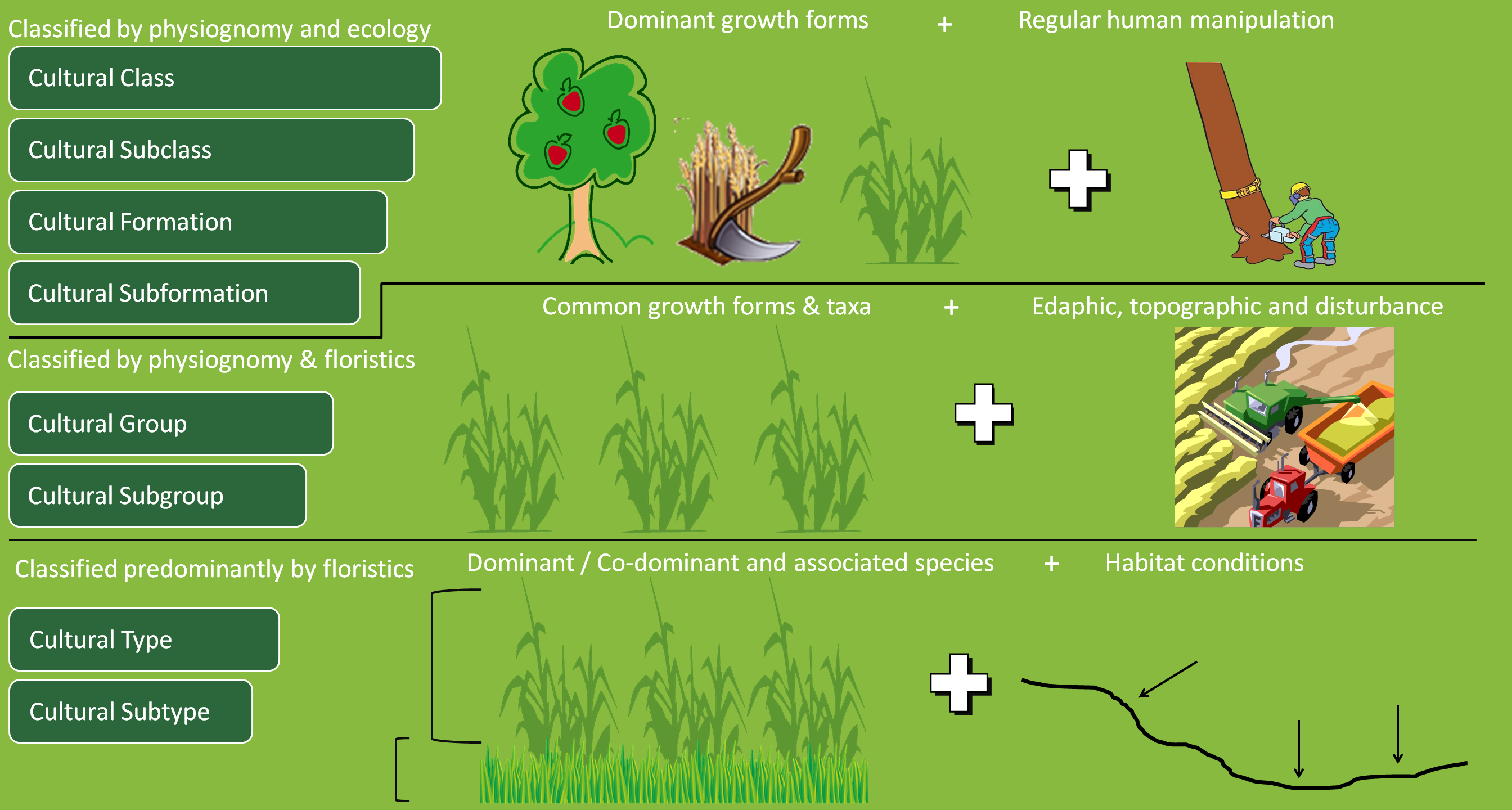Cultural Vegetation Classification
Cultural vegetation is defined as “vegetation with a distinctive structure, composition, and development determined by regular human activity.” Often, cultural vegetation has been planted, treated, or heavily impacted by anthropogenic disturbance. The dominant vegetation is often highly-manipulated by activities like mowing, clipping, etc, or is not native to the area and would not survive without active management by humans.
The hierarchy for classifying cultural vegetation incorporates floristic and physiognomic criteria as the primary characteristics used to define all units of the classification, but those are assessed in light of human activities that govern these properties. These hierarchical levels are primarily described by floristic and physiognomic criteria. The Vegetation Panel plans to continue to work with the federal agencies to refine the classification of cultural types. Further work on refining the classification for the cultural types is recognized as a major need by the FGDC Vegetation Subcommittee.
Floristic and physiognomic criteria are the primary properties of cultural vegetation used to define all units of the classification but assessed in light of human activities that govern these properties. Excluded from these criteria are properties from outside the current vegetation, such as explicit habitat factors (e.g., climate, soil type) or land use activities (e.g., grazed pasture versus ungrazed pasture), except as these are expressed in the vegetation cover. Some types are difficult to place in terms of natural versus cultural vegetation (e.g., forest plantation, pastures), and the user may need to look in both parts of the hierarchy to determine the type’s location. The graphic below provides a general overview of criteria and the levels of the cultural vegetation hierarchy.
Specific examples and the criteria used to define the eight levels of the cultural hierarchy are included in the table below, using an agricultural system as an example.
[table “3” not found /]A description of each classification concept is available for those levels that have been reviewed.
